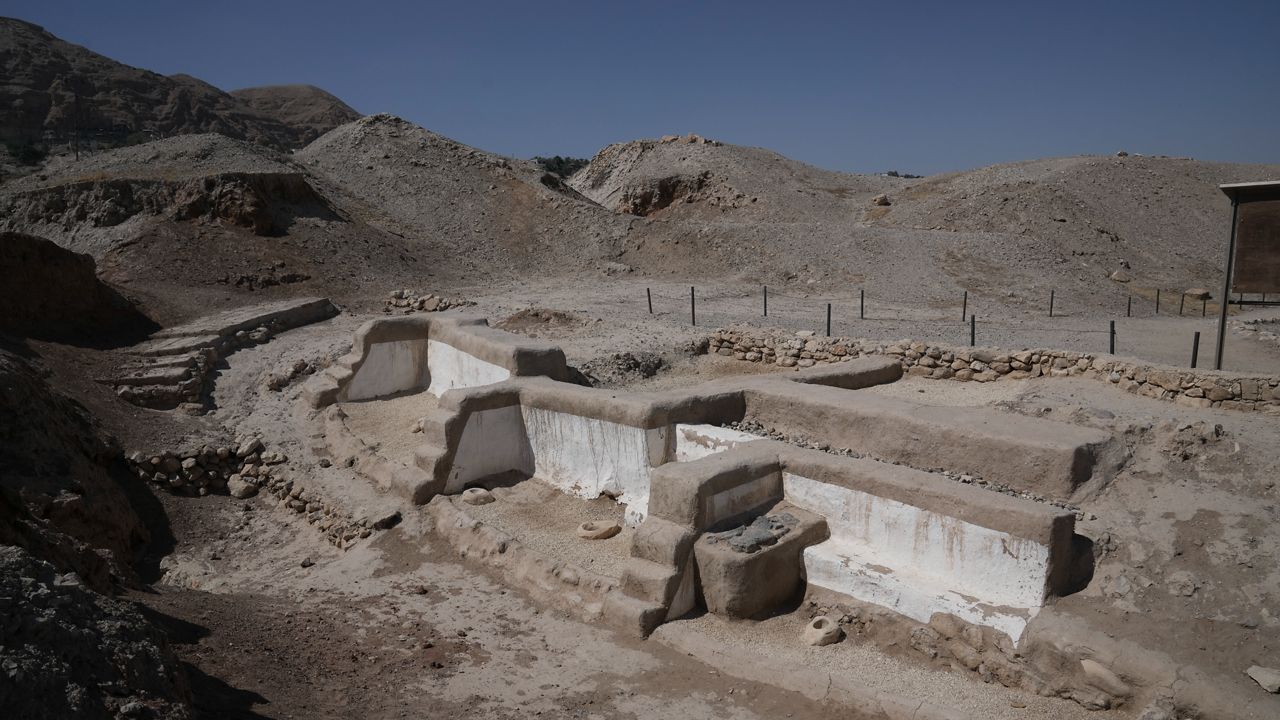A U.N. committee voted Sunday to list prehistoric ruins near the ancient West Bank city of Jericho as a World Heritage Site in Palestine, a decision that angered Israel, which controls the territory and does not recognize a Palestinian state.
Jericho is one of the oldest continually inhabited cities on earth, and is in a part of the Israeli-occupied West Bank that is administered by the internationally recognized Palestinian Authority. The listing refers to the Tell es-Sultan archaeological site nearby, which contains prehistoric ruins dating back to the ninth millennium B.C. and is outside the ancient city itself.
The decision was made at a meeting of the U.N. World Heritage Committee in Riyadh, Saudi Arabia, under the auspices of the U.N. Educational, Scientific and Cultural Organization, UNESCO.
Israel's foreign ministry released a statement Sunday that said the listing was a “cynical” ploy by the Palestinians to politicize UNESCO, and that Israel will work with its allies to reverse what it says are the organization’s “distorted” decisions.
Israel quit UNESCO in 2019, accusing it of being biased against it and of diminishing its connection to the Holy Land. Israel also objected to UNESCO's acceptance of Palestine as a member state in 2011. But Israel remains a party to the World Heritage Convention, and it sent a delegation to the meeting in Riyadh.
Israel captured the West Bank, along with Gaza and east Jerusalem, in the 1967 Mideast war. The Palestinians want all three territories for their future state. Israel views the West Bank as the biblical and cultural heartland of the Jewish people.
There have been no serious or substantive peace negotiations in over a decade, and Israel is currently led by the most nationalist and religious government in its history, making any move toward Palestinian statehood nearly unimaginable.
The modern city of Jericho is a major draw for tourism to the Palestinian territories, both because of its historical sites and proximity to the Dead Sea. In 2021, the Palestinian Authority unveiled major renovations to one of the largest mosaics in the Middle East, in a Jericho palace dating back to the 8th century.
Tell es-Sultan, an oval-shaped mound, contains evidence of one of humanity's first-known villages and an important Bronze-Age town dating back to 2600 B.C. It is around 2 kilometers (1.2 miles) from the remains of the first city of Jericho, which contains ruins of importance to Jewish history, including a synagogue dating back to the first century B.C.
UNESCO, which refers to the site as Ancient Jericho/Tell es-Sultan, took pains to clarify that the two are distinct.
“The property proposed for nomination is the prehistoric archaeological site of Tell es-Sultan located outside the antique site of Jericho,” Ernesto Ottone, UNESCO's assistant director general, said during the meeting to discuss the site.
“Later historical developments, which span over millennia and are demonstrated by material remains beyond the boundaries of Tell as-Sultan, constitute a rich cultural context, worth of historical interest and preservation, covering among others, Jewish and Christian heritage. However, this is not the focus of the proposed nomination.”
Historical heritage has long been among the many flashpoints in the Israeli-Palestinian conflict, with both sides using archaeology and conservation to demonstrate what they say is their own unique connection to the Holy Land.
The Palestinian Authority, recognized a decade ago by the United Nations as a nonmember observer state, welcomed the designation of Tell es-Sultan.
President Mahmoud Abbas said in a statement that it “testifies to the authenticity and history of the Palestinian people," adding that “the state of Palestine is committed to preserving this unique site for the benefit of mankind.”
There was no immediate comment from Israel.
Paris-based UNESCO began the World Heritage List in 1978. It includes a broad array of over 1,000 sites — from the Acropolis in Athens to the Great Wall of China — nominated by their respective nations.



